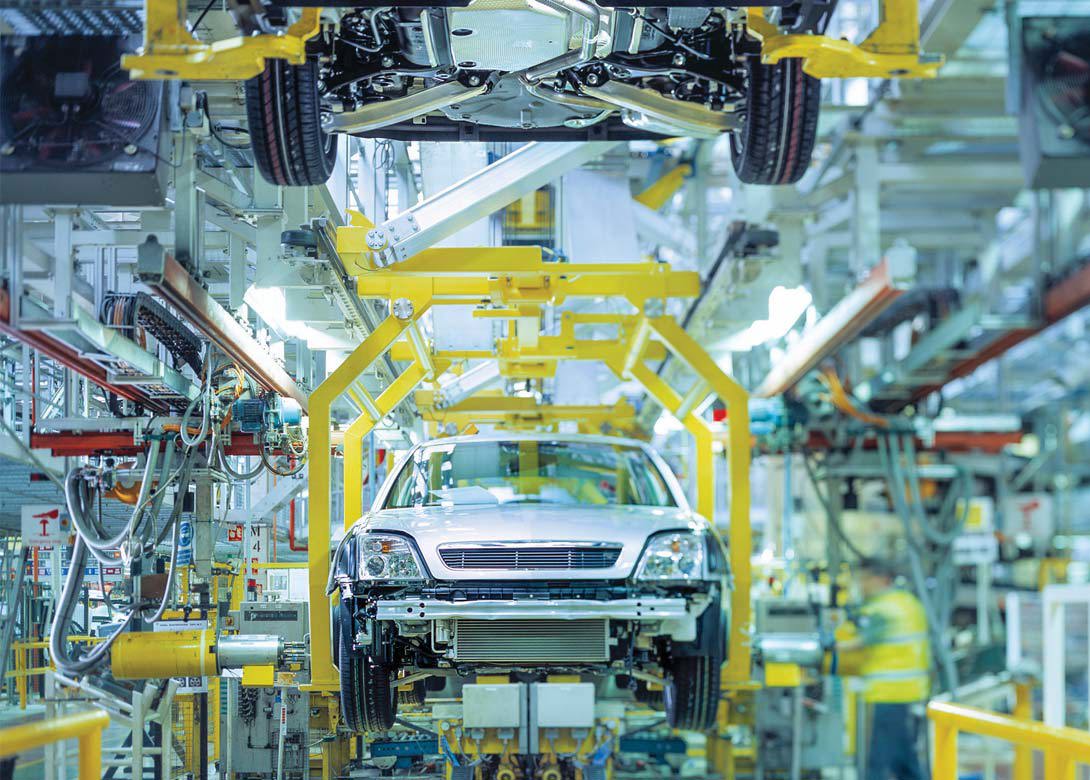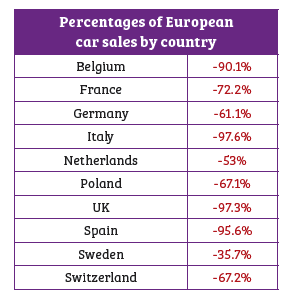
By Marco A. Guerritore, editor in chief, Italian Fasteners Magazine
The automotive sector is very important for the fastener industry both in terms of consumption – an average of 20kg of fasteners are used in each vehicle – and the development and quality of the products. In fact, the majority of fasteners used within car manufacturing owe their technical evolution to the progress of the car design over time, which has enabled them to become technologically advanced special products.
Today, however, the car industry is going through a period of great uncertainty. The logical question is therefore: ‘What is the future of the automotive sector?’ Many scenarios are opening up and all of them are disturbing.
The first scenario is the one associated with Covid-19, which is proving to be more detrimental than the 2008 – 2009 crisis – where the market lost 15% and returned to positive territory the following year. Today, due to the pandemic, the European car market is collapsing. The real effects of Covid-19 are highlighted by the negative percentages of car sales in the most critical period of the pandemic, i.e in April 2020, compared to the same period in 2019.
An analysis of the distribution in the decline of sales in European countries shows they are more consistent in countries where ‘confinement’ has been harsher. In a report, the President of ANFIA (Italian Association of the Automotive Industry) Paolo Scudieri, points out that in the first eight months of 2020 the European car market lost 2.67 million units.

In August, a month with traditionally low volumes, the decline in registrations was again more significant (-17.6%), although not at the levels of previous months (June closed at -24%). The ANFIA bulletin states that total registrations in Italy for the month of July amounted to 113,653 units (-10.9%), while volumes in August amounted to 88,801 units (-0.4%).
In the first eight months of 2020, total registrations amounted to 809,655 units, a decrease of 38.9% compared to the volumes of the same period in 2019.
The analysis of the Italian car market by fuel type is very interesting, again according to the data released by ANFIA. Cumulatively, since the beginning of 2020, the share of new diesel cars is 35%, with registrations down by 48.5%, while the share of petrol cars stands at 42% with volumes down by 42% in the January – August period. Alternative fuel cars accounted for 23% of total registrations, down by 4%. However, gas fuelled cars decreased by 41% while registrations of electric cars
(BEV – Battery Electric Vehicle) grew by 106%, plug-in hybrids by 200%, non-rechargeable petrol hybrids by 30%, and non-rechargeable diesel hybrids by 78%. Electric vehicles, as a whole, accounted for 14% of the market in the period between January and August 2020.
In addition to the market trends, it must be noted that with the advent of the pandemic, the notion of mobility is also changing. Due to the danger of catching the virus, especially in large cities, more and more people are preferring to use private cars instead of public transport. This choice should therefore lead to a surge in the car market. On the other hand, however, it must be considered that, especially in large cities, the deterrent to use passenger cars is the chronic lack of parking and difficulty of travelling.
Unfortunately, in recent years many Italian cities have developed without any consideration for the existence of the car. Furthermore, the high concentration of cars causes another drawback i.e air pollution. This should not only make the authorities more responsible, but also large companies. They should speed up the implementation of their sustainability programmes in order to meet the expectations of consumers. Needless to say, people’s sensitivities and behaviours can change radically and very quickly under the influence of events.
“We have witnessed the forceful emergence of a concept that is not directly linked to the pandemic, but that derives from an idea of wellbeing and the common good in which air quality, especially in large cities, is now considered a priority and no longer just a niche for convinced ecologists,” emphasises Sociologist Franco Morace. “This is especially true among the younger generations, who already show a disaffection towards private cars and instead push for new forms of urban micro-mobility. For them, the car continues to be a mysterious object and certainly no longer an object of desire.”
According to Franco Morace, the social concept of the car is gradually changing in the minds of consumers. The car as a symbol of social status is beginning to fade, especially among the new generations. It is losing its importance due to a change of mentality because it is no longer the object of desire.
Furthermore, what currently dampens the enthusiasm of those who are about to buy a new car is the great difficulty in choosing the right one. There are so many questions: Diesel or petrol? Petrol or hybrid? Hybrid or electric? Electric or is it better to wait for hydrogen?
In short, there are many questions that embarrass, disorient and demotivate potential buyers who could, especially if they live in a city, opt for alternative solutions such as any form of ‘car sharing’. A great incentive for the car of the future should come from improvements in automatic driving. The car industry is making a great effort by investing a lot of money in research aimed at completely resolving the problem within a reasonable time period.
At present there are 5 levels of autonomous driving. It starts from the first level, which consists, above all, of electronic driving assistance with the use of radar and various sensors, and ends with the fifth level where the car is able to move independently in any direction and in all conditions.
The vast majority of cars sold today have level one and level two driving systems, therefore with partial autonomy. Moving to higher levels of autonomous driving is not a simple matter; large investments in design and experimentation are required, but the progress of automatic driving will certainly lead to a great revolution in the use and perhaps in the very concept of the car.
Automatic driving combined with innovative concepts of eco-friendly motorisation could be the catalyst to give new life to a sector that has been showing signs of advanced ageing for some time. The entire and important sector of components will also be involved in this phase of renewal, which in 2019 had a turnover of about €170 billion and employed more than 300,000 people.
Within the context of car components, the fastener holds one of the places of honour and must therefore play its role with the usual swiftness and ability. In order to be ready to face future events, fastener manufacturers will have to bring to the table inventiveness, courage, initiative, professionalism and above all financial commitment. Consequently, the collaboration between the bolt and the car will be as strong as in the past, even during the renewal phase.

Biog
Will joined Fastener + Fixing Magazine in 2007 and over the last 15 years has experienced every facet of the fastener sector - interviewing key figures within the industry and visiting leading companies and exhibitions around the globe.
Will manages the content strategy across all platforms and is the guardian for the high editorial standards that the Magazine is renowned.






